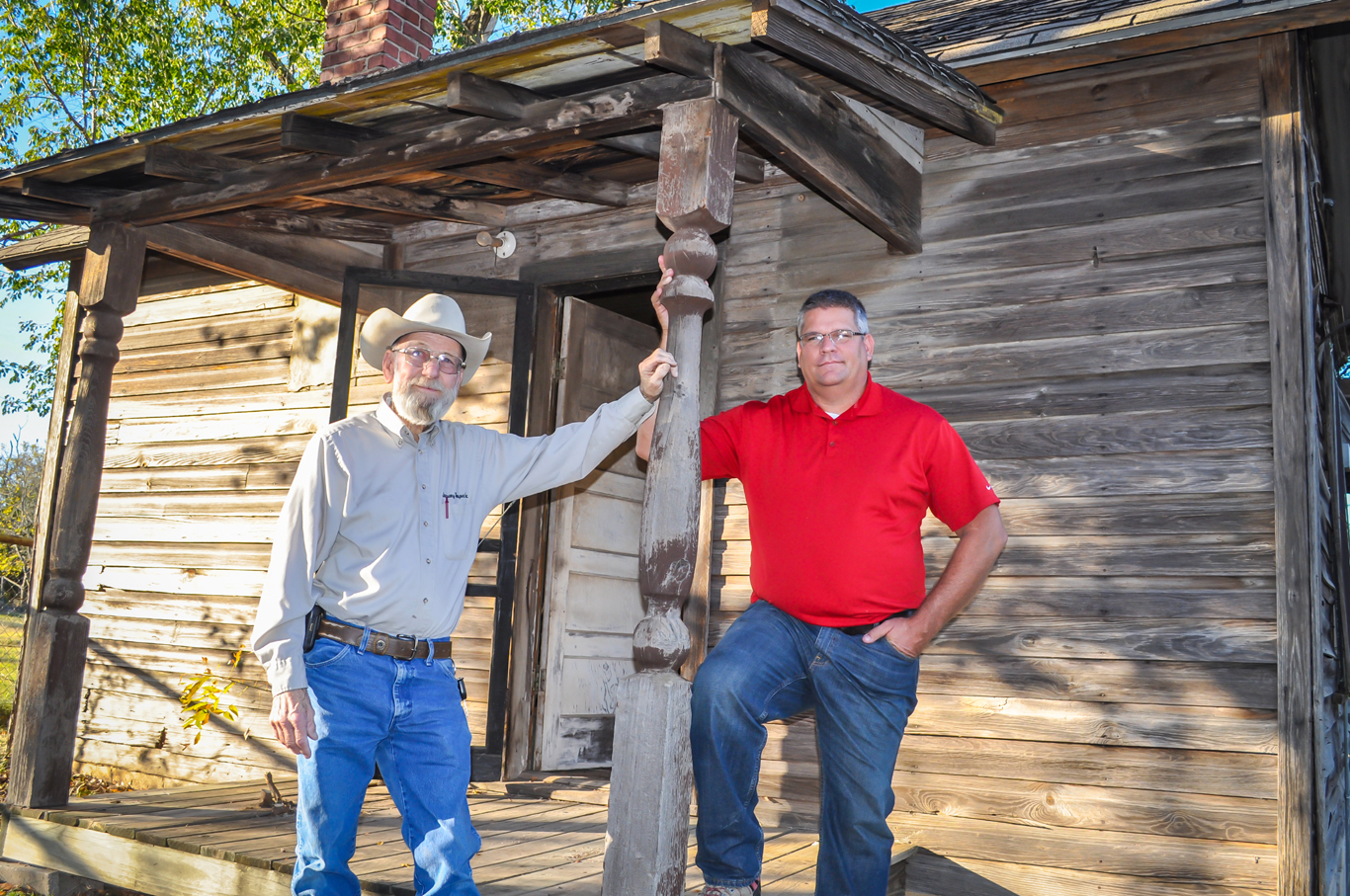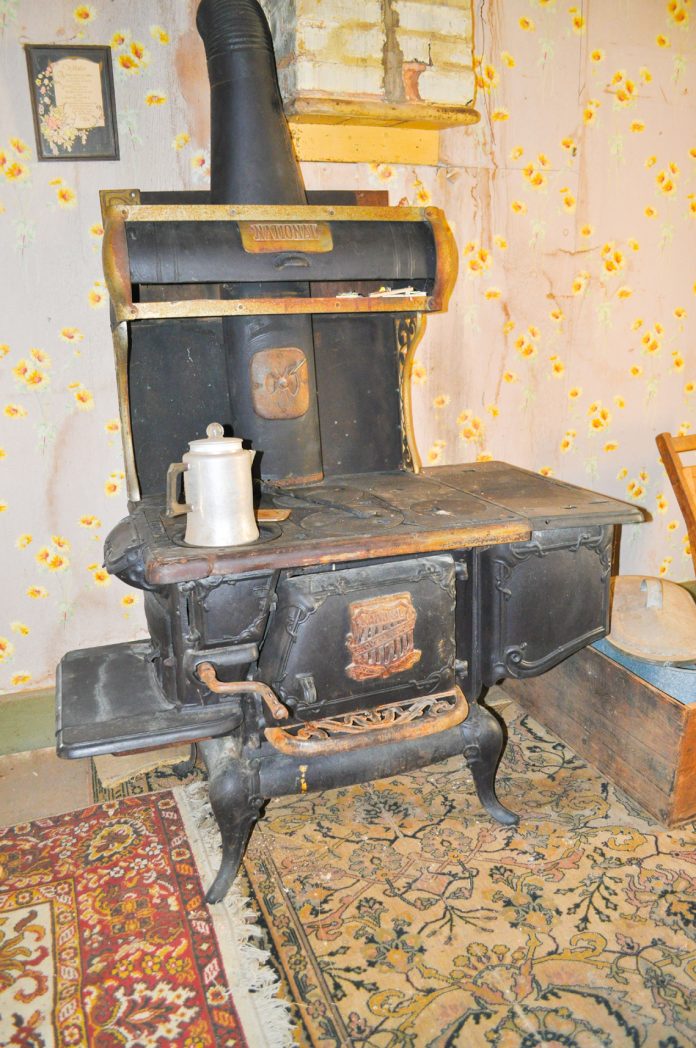
story and photos by Bobby Anderson, Staff Writer
Mark Hamm knows that someday in the not-too-distant future, central Oklahoma will be one giant metroplex.
“In the next 20 years they’re projecting another 20,000 people moving to Moore,” the Moore City Councilman said. “They’re all brand new and they don’t know anything about this and it will just be forgotten.”
Hamm was referring to Moore’s history, which dates back before statehood.
And as he discussed the city’s constant progress he was standing on the porch of Myron January’s family home, built in 1895 and believed to be the oldest structure in Moore.
The town’s history – and Myron January’s childhood home – are something Hamm and community members want to preserve for all to see.
In November Moore voters approved the continuation of a quarter-cent sales tax. Part of that money will go the development of an Old Town park, similar to what Norman has near its train depot.
The vision is much bigger than the old January home.
An interactive trail, a sitting area and hopefully a visitor center located near the railroad tracks will spring up some day soon. City officials already have their eye on procuring the original train depot, which is currently being used as an office on Shields Boulevard in south Oklahoma City.
Right in the middle is expected to be the January house, which Myron is giving to the city.
“It’s great. I think it’s a miracle,” January said of home’s impending move. “It’s going to have to be done pretty soon because you can tell it’s getting in bad shape.
JURY AND JANUARY
When you look back in the annals of Moore history you’ll see a couple names stick out – Jury and January.
The Land Run led to the Jury family settling on 160 acres in what now is southeast Moore. Next door was the January family.
“Two Jurys and two Januarys married – two brothers and two sisters,” January said. “So the Januarys and the Jurys have been very close all their lives.”
So close in fact that the Jury home now sits on January property, at least until the City of Moore can get it moved and preserved.
Even though it’s bare wood and has an addition missing, January still navigates the 400-square-foot, two-room house like it was yesterday.
“It wasn’t a whole lot more than this … but you would come in a door here and this was the back porch where (his grandmother Artie) did the washing,” January said. “There was a wall here and a built-in cabinet there.”
Myron January moved to Moore at age three. He left home as a teenager when he got married at 17. He’s lived within two miles of the current house ever since, keeping cattle on the remaining 75 acres.
Things have changed, as subdivisions have sprang up all around.
A new Sam’s Club sits less than a mile away. Target, Home Depot, JC Penny’s, Lowe’s and the busiest IMAX theatre in the world are just across I-35.
“I’ve dreaded it for many years,” January said with a laugh. “That’s life. Progress.”
Just down the street dairy silos dating back to the 1940s still stand as Moore’s only skyscrapers.
At one time, 400 head of cattle were milked at the Mathesen Dairy, which dispatched trucks daily to grocery stores across the county delivering fresh milk with cream on the top.
WHEN MOORE WAS LESS
Moore was founded during the Land Run of 1889. The early settlers came on train, horseback, wagons, and some on foot.
According to local historians, the town’s original name was Verbeck as designated by the railroad company.
However, a railroad employee named Al Moore, reported to be either a conductor or a brakeman, lived in a boxcar at the camp and had difficulty receiving his mail.
He painted his name “Moore” on a board and nailed it on the boxcar.
When a postmaster was appointed, the name stuck and he continued to call the settlement Moore.
Hamm got into politics to preserve that small-town feel, even though the city is now the state’s seventh-largest.
“I like politics but I’ve always liked local politics more than national,” Hamm said. “It’s where things happen, people see their government working for them. You call me about a problem in Moore, hopefully, we can get it fixed before you get home.”
And Hamm knows the past should play a part in Moore’s future. That’s why the city and a team of volunteers have set out to preserve it.
One of the first efforts is inviting people to help document that story online at www.historyofmoore.com.
Currently, there’s lots of gaps and missing stories.
And it’s in need of more people like Myron January to help fill in the blanks.














